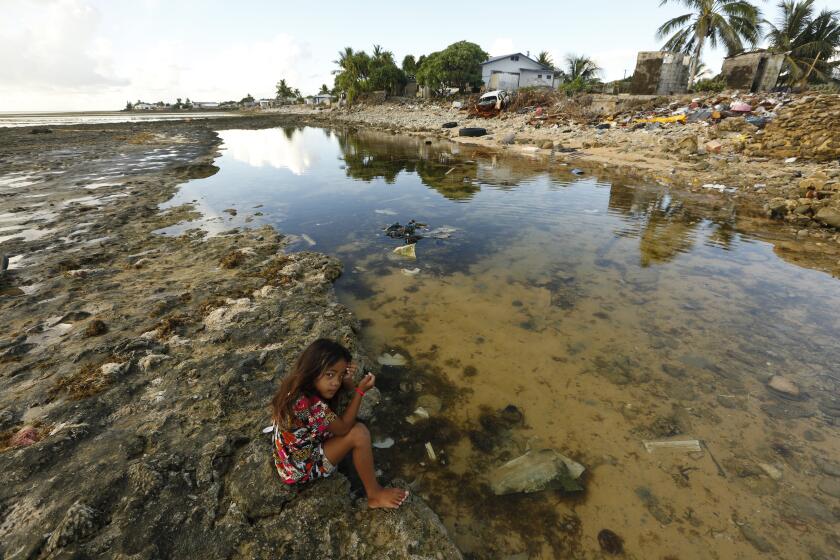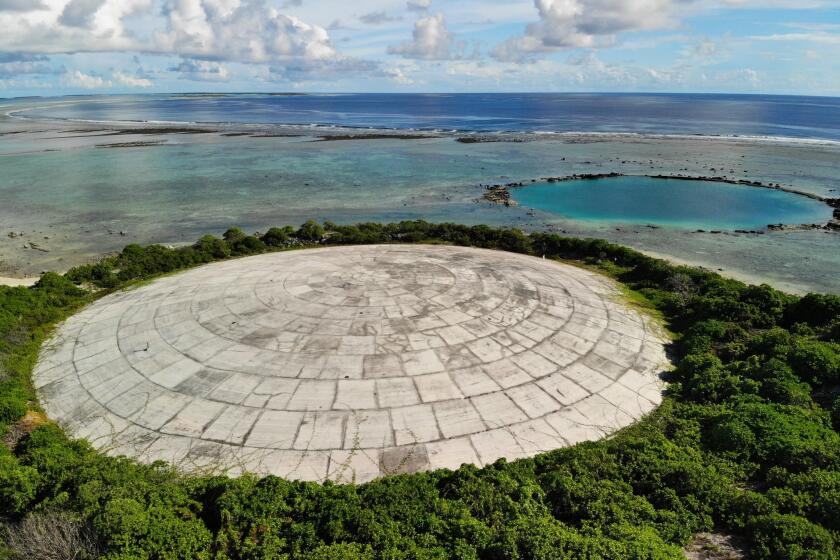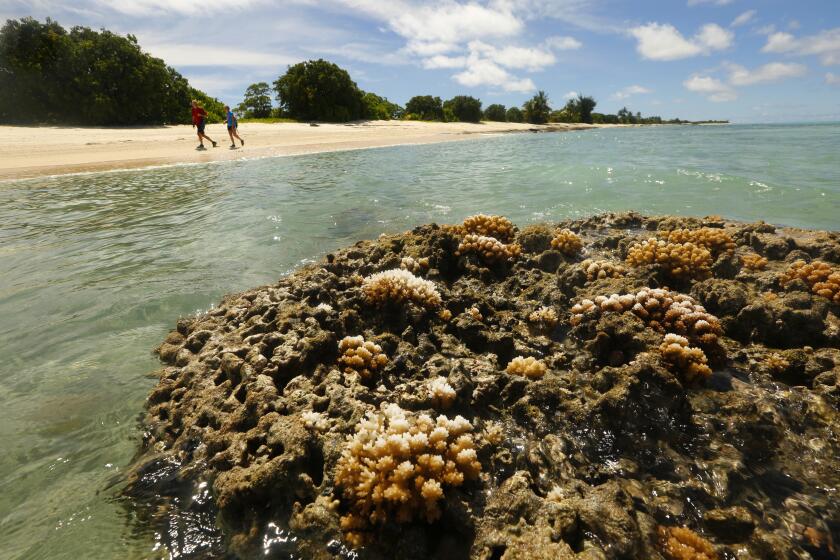Marshall Islands Special Report
With climate change and rising seas, the U.S. is about to face a reckoning for the toxic nuclear legacy we buried — and forgot — in the Marshall Islands.
A special report from the L.A. Times.
Alan Jones witnessed the first U.S. hydrogen bomb test in the Marshall Islands. He was shaken by the terror of the explosion and believes the radiation exposure may have plagued him for years.
We started out planning to focus on the U.S. legacy of radiation in the Marshall Islands, then encountered firsthand the effects of climate change. Both issues are converging in the central Pacific.
Researchers have found high levels of radiation in giant clams near the Central Pacific site where the United States entombed waste from nuclear testing almost four decades ago, raising concerns the contamination is spreading from the dump site’s tainted groundwater into the ocean and the food chain.
Think of the most radioactive landscapes on the planet and the names Chernobyl and Fukushima may come to mind.
The Marshall Islands, a key U.S. ally in the central Pacific, has declared a national climate crisis because of the mounting risk of sea-level rise.







